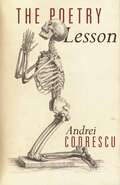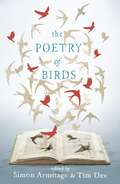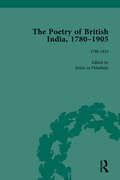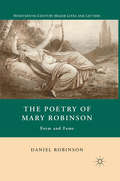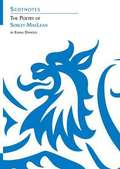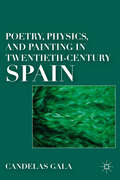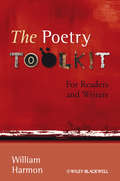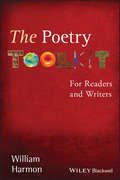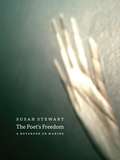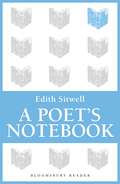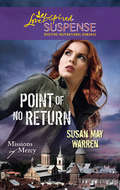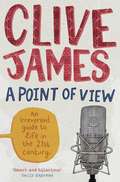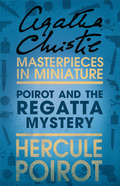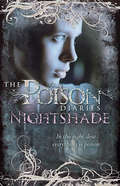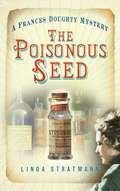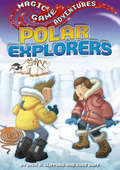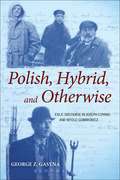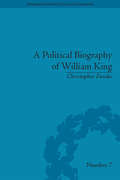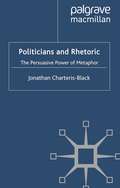- Table View
- List View
The Poetry Lesson
by Andrei Codrescu"Intro to Poetry Writing is always like this: a long labor, a breech birth, or, obversely, mining in the dark. You take healthy young Americans used to sunshine (aided sometimes by Xanax and Adderall), you blindfold them and lead them by the hand into a labyrinth made from bones. Then you tell them their assignment: 'Find the Grail. You have a New York minute to get it.'"--The Poetry Lesson ? The Poetry Lesson is a hilarious account of the first day of a creative writing course taught by a "typical fin-de-siècle salaried beatnik"--one with an antic imagination, an outsized personality and libido, and an endless store of entertaining literary anecdotes, reliable or otherwise. Neither a novel nor a memoir but mimicking aspects of each, The Poetry Lesson is pure Andrei Codrescu: irreverent, unconventional, brilliant, and always funny. Codrescu takes readers into the strange classroom and even stranger mind of a poet and English professor on the eve of retirement as he begins to teach his final semester of Intro to Poetry Writing. As he introduces his students to THE TOOLS OF POETRY (a list that includes a goatskin dream notebook, hypnosis, and cable TV) and THE TEN MUSES OF POETRY (mishearing, misunderstanding, mistranslating . . . ), and assigns each of them a tutelary "Ghost-Companion" poet, the teacher recalls wild tales from his coming of age as a poet in the 1960s and 1970s, even as he speculates about the lives and poetic and sexual potential of his twenty-first-century students. From arguing that Allen Ginsberg wasn't actually gay to telling about the time William Burroughs's funeral procession stopped at McDonald's, The Poetry Lesson is a thoroughly entertaining portrait of an inimitable poet, teacher, and storyteller.
The Poetry of Birds
by Simon ArmitageBirds are the most obvious wild things we have around us. They are much watched and much loved, not least by poets.Bird poetry is as old as British poetry itself, and a remarkable number of poets have written poems about birds. Indeed some of the most famous poems in the language concern birds, from Keats's nightingale and Shelley's skylark to Yeats's swans and Hardy's thrush.In this wonderful anthology poet Simon Armitage and birdwatching enthusiast Tim Dee gather together the best of the past and the present, including those famous poems but also many overlooked gems. And in a fascinating divergence from standard anthology practice, the poems are organized according to ornithological classification, beginning with poems by Marianne Moore and David Wright on the ostrich and the emperor penguin and ending with Emily Dickinson and Wallace Stevens on the oriole and the blackbird.
The Poetry of British India, 1780–1905
by Maire ni FhlathuinThis two-volume reset edition draws together a selection of Anglo-Indian poetry from the Romantic era and the nineteenth century.
The Poetry of Mary Robinson: Form and Fame (Nineteenth-Century Major Lives and Letters)
by D. RobinsonOnce celebrated as 'the English Sappho,' Mary Robinson was a major figure in British Romanticism. This volume offers comprehensive study of Robinson's achievement as a poet, a professional writer, a formative influence on the Romantic movement, and a participant in the literary, political, and social scene of the late 1700s.
The Poetry Of Sorley Maclean (Scotnotes Ser. #30)
by Emma DymockAlong with his contemporaries Edwin Morgan and Hugh MacDiarmid, Sorley MacLean is recognised as one of the most important Scottish poets of the twentieth century. Born at Oscaig on the island of Raasay in 1911, MacLean was greatly influenced by Gaelic tradition and by contemporary cultural and political ideas from around the world. In many ways he brought Scottish Gaelic poetry into the modern era, and he is a key figure in modern Scottish literature. MacLean’s poetry ranges beyond Scotland to confront European and world events and politics. This book offers a detailed study of MacLean’s poems, providing insight into the context of his work. It also includes close readings of selected poems that best represent his key themes and ideas. This Scotnote is ideal for senior school pupils and students of all ages as a general introduction or as a starting point for more in-depth study.
Poetry, Physics, and Painting in Twentieth-Century Spain
by C. GalaThis book reads the work of Salinas, Guillén, Larrea, Diego, Alberti, Méndez, and Lorca in analogical relation with Cubism and with the revolutionary discoveries of modern physics. Gala advances traditional criticism by considering these artists in the broader cultural context of Spain, Europe, and European Modernism.
The Poetry Toolkit: For Readers and Writers
by William HarmonThe Poetry Toolkit: For Readers and Writers provides students with the essential intellectual and practical tools necessary to read, understand, and write poetry. Explains the most important elements of poetry in clear language and an easily accessible manner Offers readers both the expertise of an established scholar and the insights of a practicing poet Draws on examples from more than 1,500 years of English literature
The Poetry Toolkit: For Readers and Writers
by William HarmonThe Poetry Toolkit: For Readers and Writers provides students with the essential intellectual and practical tools necessary to read, understand, and write poetry. Explains the most important elements of poetry in clear language and an easily accessible manner Offers readers both the expertise of an established scholar and the insights of a practicing poet Draws on examples from more than 1,500 years of English literature
The Poet's Freedom: A Notebook on Making
by Susan StewartWhy do we need new art? How free is the artist in making? And why is the artist, and particularly the poet, a figure of freedom in Western culture? The MacArthur Award–winning poet and critic Susan Stewart ponders these questions in The Poet’s Freedom. Through a series of evocative essays, she not only argues that freedom is necessary to making and is itself something made, but also shows how artists give rules to their practices and model a self-determination that might serve in other spheres of work. Stewart traces the ideas of freedom and making through insightful readings of an array of Western philosophers and poets—Plato, Homer, Marx, Heidegger, Arendt, Dante, and Coleridge are among her key sources. She begins by considering the theme of making in the Hebrew Scriptures, examining their accountof a god who creates the world and leaves humans free to rearrange and reform the materials of nature. She goes on to follow the force of moods, sounds, rhythms, images, metrical rules, rhetorical traditions, the traps of the passions, and the nature of language in the cycle of making and remaking. Throughout the book she weaves the insight that the freedom to reverse any act of artistic making is as essential as the freedom to create. A book about the pleasures of making and thinking as means of life, The Poet’s Freedom explores and celebrates the freedom of artists who, working under finite conditions, make considered choices and shape surprising consequences. This engaging and beautifully written notebook on making will attract anyone interested in the creation of art and literature.
The Poet's Freedom: A Notebook on Making
by Susan StewartWhy do we need new art? How free is the artist in making? And why is the artist, and particularly the poet, a figure of freedom in Western culture? The MacArthur Award–winning poet and critic Susan Stewart ponders these questions in The Poet’s Freedom. Through a series of evocative essays, she not only argues that freedom is necessary to making and is itself something made, but also shows how artists give rules to their practices and model a self-determination that might serve in other spheres of work. Stewart traces the ideas of freedom and making through insightful readings of an array of Western philosophers and poets—Plato, Homer, Marx, Heidegger, Arendt, Dante, and Coleridge are among her key sources. She begins by considering the theme of making in the Hebrew Scriptures, examining their accountof a god who creates the world and leaves humans free to rearrange and reform the materials of nature. She goes on to follow the force of moods, sounds, rhythms, images, metrical rules, rhetorical traditions, the traps of the passions, and the nature of language in the cycle of making and remaking. Throughout the book she weaves the insight that the freedom to reverse any act of artistic making is as essential as the freedom to create. A book about the pleasures of making and thinking as means of life, The Poet’s Freedom explores and celebrates the freedom of artists who, working under finite conditions, make considered choices and shape surprising consequences. This engaging and beautifully written notebook on making will attract anyone interested in the creation of art and literature.
The Poet's Freedom: A Notebook on Making
by Susan StewartWhy do we need new art? How free is the artist in making? And why is the artist, and particularly the poet, a figure of freedom in Western culture? The MacArthur Award–winning poet and critic Susan Stewart ponders these questions in The Poet’s Freedom. Through a series of evocative essays, she not only argues that freedom is necessary to making and is itself something made, but also shows how artists give rules to their practices and model a self-determination that might serve in other spheres of work. Stewart traces the ideas of freedom and making through insightful readings of an array of Western philosophers and poets—Plato, Homer, Marx, Heidegger, Arendt, Dante, and Coleridge are among her key sources. She begins by considering the theme of making in the Hebrew Scriptures, examining their accountof a god who creates the world and leaves humans free to rearrange and reform the materials of nature. She goes on to follow the force of moods, sounds, rhythms, images, metrical rules, rhetorical traditions, the traps of the passions, and the nature of language in the cycle of making and remaking. Throughout the book she weaves the insight that the freedom to reverse any act of artistic making is as essential as the freedom to create. A book about the pleasures of making and thinking as means of life, The Poet’s Freedom explores and celebrates the freedom of artists who, working under finite conditions, make considered choices and shape surprising consequences. This engaging and beautifully written notebook on making will attract anyone interested in the creation of art and literature.
The Poet's Freedom: A Notebook on Making
by Susan StewartWhy do we need new art? How free is the artist in making? And why is the artist, and particularly the poet, a figure of freedom in Western culture? The MacArthur Award–winning poet and critic Susan Stewart ponders these questions in The Poet’s Freedom. Through a series of evocative essays, she not only argues that freedom is necessary to making and is itself something made, but also shows how artists give rules to their practices and model a self-determination that might serve in other spheres of work. Stewart traces the ideas of freedom and making through insightful readings of an array of Western philosophers and poets—Plato, Homer, Marx, Heidegger, Arendt, Dante, and Coleridge are among her key sources. She begins by considering the theme of making in the Hebrew Scriptures, examining their accountof a god who creates the world and leaves humans free to rearrange and reform the materials of nature. She goes on to follow the force of moods, sounds, rhythms, images, metrical rules, rhetorical traditions, the traps of the passions, and the nature of language in the cycle of making and remaking. Throughout the book she weaves the insight that the freedom to reverse any act of artistic making is as essential as the freedom to create. A book about the pleasures of making and thinking as means of life, The Poet’s Freedom explores and celebrates the freedom of artists who, working under finite conditions, make considered choices and shape surprising consequences. This engaging and beautifully written notebook on making will attract anyone interested in the creation of art and literature.
The Poet's Freedom: A Notebook on Making
by Susan StewartWhy do we need new art? How free is the artist in making? And why is the artist, and particularly the poet, a figure of freedom in Western culture? The MacArthur Award–winning poet and critic Susan Stewart ponders these questions in The Poet’s Freedom. Through a series of evocative essays, she not only argues that freedom is necessary to making and is itself something made, but also shows how artists give rules to their practices and model a self-determination that might serve in other spheres of work. Stewart traces the ideas of freedom and making through insightful readings of an array of Western philosophers and poets—Plato, Homer, Marx, Heidegger, Arendt, Dante, and Coleridge are among her key sources. She begins by considering the theme of making in the Hebrew Scriptures, examining their accountof a god who creates the world and leaves humans free to rearrange and reform the materials of nature. She goes on to follow the force of moods, sounds, rhythms, images, metrical rules, rhetorical traditions, the traps of the passions, and the nature of language in the cycle of making and remaking. Throughout the book she weaves the insight that the freedom to reverse any act of artistic making is as essential as the freedom to create. A book about the pleasures of making and thinking as means of life, The Poet’s Freedom explores and celebrates the freedom of artists who, working under finite conditions, make considered choices and shape surprising consequences. This engaging and beautifully written notebook on making will attract anyone interested in the creation of art and literature.
The Poet's Freedom: A Notebook on Making
by Susan StewartWhy do we need new art? How free is the artist in making? And why is the artist, and particularly the poet, a figure of freedom in Western culture? The MacArthur Award–winning poet and critic Susan Stewart ponders these questions in The Poet’s Freedom. Through a series of evocative essays, she not only argues that freedom is necessary to making and is itself something made, but also shows how artists give rules to their practices and model a self-determination that might serve in other spheres of work. Stewart traces the ideas of freedom and making through insightful readings of an array of Western philosophers and poets—Plato, Homer, Marx, Heidegger, Arendt, Dante, and Coleridge are among her key sources. She begins by considering the theme of making in the Hebrew Scriptures, examining their accountof a god who creates the world and leaves humans free to rearrange and reform the materials of nature. She goes on to follow the force of moods, sounds, rhythms, images, metrical rules, rhetorical traditions, the traps of the passions, and the nature of language in the cycle of making and remaking. Throughout the book she weaves the insight that the freedom to reverse any act of artistic making is as essential as the freedom to create. A book about the pleasures of making and thinking as means of life, The Poet’s Freedom explores and celebrates the freedom of artists who, working under finite conditions, make considered choices and shape surprising consequences. This engaging and beautifully written notebook on making will attract anyone interested in the creation of art and literature.
A Poet's Notebook
by Edith SitwellFirst published in 1943, this is a selection of writings from Dr. Sitwell's private notebooks. It includes essays on prosody, the role of the poet, the nature of poetry, and includes her full length work 'A Notebook on William Shakespeare', as well as discussion of Chaucer, Herrick, Wordsworth, Pope and Byron amongst others.The section on Shakespeare consists of essays on the general aspect of the plays - those great hymns to the principle and the glory of life. There are long essays on King Lear, Macbeth, Othello, and Hamlet. Miss Sitwell believes, with all humility, that she has discovered new sources of the inspiration of King Lear, throwing a new light on the whole play , and giving us new meaning to the mad scenes, of an unsurpassable grandeur, depth and terror. There are essays on many of the comedies, and long passages about the Fools and Clowns, all of which serve to illiminate Shakespeare's mighty and many-sided genius.
Point Of No Return (Missions of Mercy #1)
by Susan May WarrenAn American boy and a warlord's engaged daughter have disappeared - together - in an Eastern European border country. Only one man can find them in time to prevent an international meltdown - Chet Stryker. But Chet is taken aback when he realizes the boy is the nephew of Mae Lund, Chet's former flame.
A Point of View
by Clive James21st century Britain: a point of view from our fiercest and funniest critic The BBC Radio 4 series A Point of View has been on the air since 2007. Clive James was one of the most popular presenters, and now, for the first time, his original pieces – sixty in total – and previously unpublished postscripts are collected together in one volume. Read along with Clive James as he offers his informative, thought-provoking and entertaining insights into everything from wheelie bins to plastic surgery, Elizabeth Hurley to the Olympics, Britain’s Got Talent to Damien Hirst, Harry Potter to giving up smoking – and plenty more besides.
Poirot and the Regatta Mystery: An Agatha Christie Short Story (Hercule Poirot Mysteries Ser.)
by Agatha ChristieA classic Agatha Christie short story, available individually for the first time as an ebook.
Poison Diaries: Nightshade (The\poison Diaires Ser.)
by Maryrose WoodA dark, gothic tale of romance… and murder.Part of the grippingly dark series, The Poison Diaries.
The Poisonous Seed: A Frances Doughty Mystery 1 (A\frances Doughty Mystery Ser. #1)
by Linda StratmannWhen a customer of William Doughty's chemist shop dies of strychnine poisoning after drinking medicine he dispensed, William is blamed, and the family faces ruin. William's daughter, nineteen year old Frances, determines to redeem her ailing father's reputation and save the business. She soon becomes convinced that the death was murder, but unable to convince the police, she turns detective. Armed only with her wits, courage and determination, and aided by some unconventional new friends, Frances uncovers a startling deception and solves a ten year old murder. There will be more deaths, and a secret in her own family will be revealed before the killer is unmasked, and Frances will find that her life has changed forever. The first book in the popular Frances Doughty Mystery series.
Polar Explorers (Magic Game Adventures #6)
by Jack D CliffordWhen Harry and Jade are suddenly transported to the South Pole, they come across a group of stranded penguins - can they help save them?Imagine if your computer game console was magic... and imagine if it transported you into the game you were playing!This series features exciting stories for computer game fans who are developing their reading confidence.
Polish, Hybrid, and Otherwise: Exilic Discourse in Joseph Conrad and Witold Gombrowicz
by George Z. GasynaPolish, Hybrid, and Otherwise examines the triple compact made by displaced authors with language, their host country, and the homeland left behind. It considers the entwined phenomena of expatriation and homelessness, and the artistic responses to these conditions, including reconstructions of identity and the creation of idealized new homelands. Conrad and Gombrowicz, writers who lived with the condition of exile, were in the vanguard of what today has become a thriving intellectual community of transnationals whose calling card is precisely their hybridity and fluency in multiple cultural traditions.Conrad and Gombrowicz's Polish childhoods emerge as cultural touchstones against which they formulated their writing philosophies. Gasyna claims that in both cases negotiating exile involved processes of working through a traumatic past through the construction of narrative personae that served as strategic doubles. Both authors engaged in extensive manipulation of their public image. Above all, Conrad and Gombrowicz's narratives are united by a desire for a linguistic refuge, a proposed home-in-language, and a set of techniques deployed in the representation of their predicament as subjects caught in-between.
A Political Biography of William King (Eighteenth-Century Political Biographies)
by Christopher FauskeWilliam King (1650–1729) was perhaps the dominant Irish intellect of the period from 1688 until his death in 1729. An Anglican (Church of Ireland) by conversion, King was a strident critic of John Toland and the clerical superior of Jonathan Swift.
A Political Biography of William King (Eighteenth-Century Political Biographies #7)
by Christopher FauskeWilliam King (1650–1729) was perhaps the dominant Irish intellect of the period from 1688 until his death in 1729. An Anglican (Church of Ireland) by conversion, King was a strident critic of John Toland and the clerical superior of Jonathan Swift.
Politicians and Rhetoric: The Persuasive Power of Metaphor
by J. Charteris-BlackThis analysis of the rhetoric of nine successfully persuasive politicians explains how their use of language created credible and consistent stories about themselves and the social world they inhabit. It explores their use of metaphors, their myths and how language analysis helps us to understand how politicians are able to persuade.
